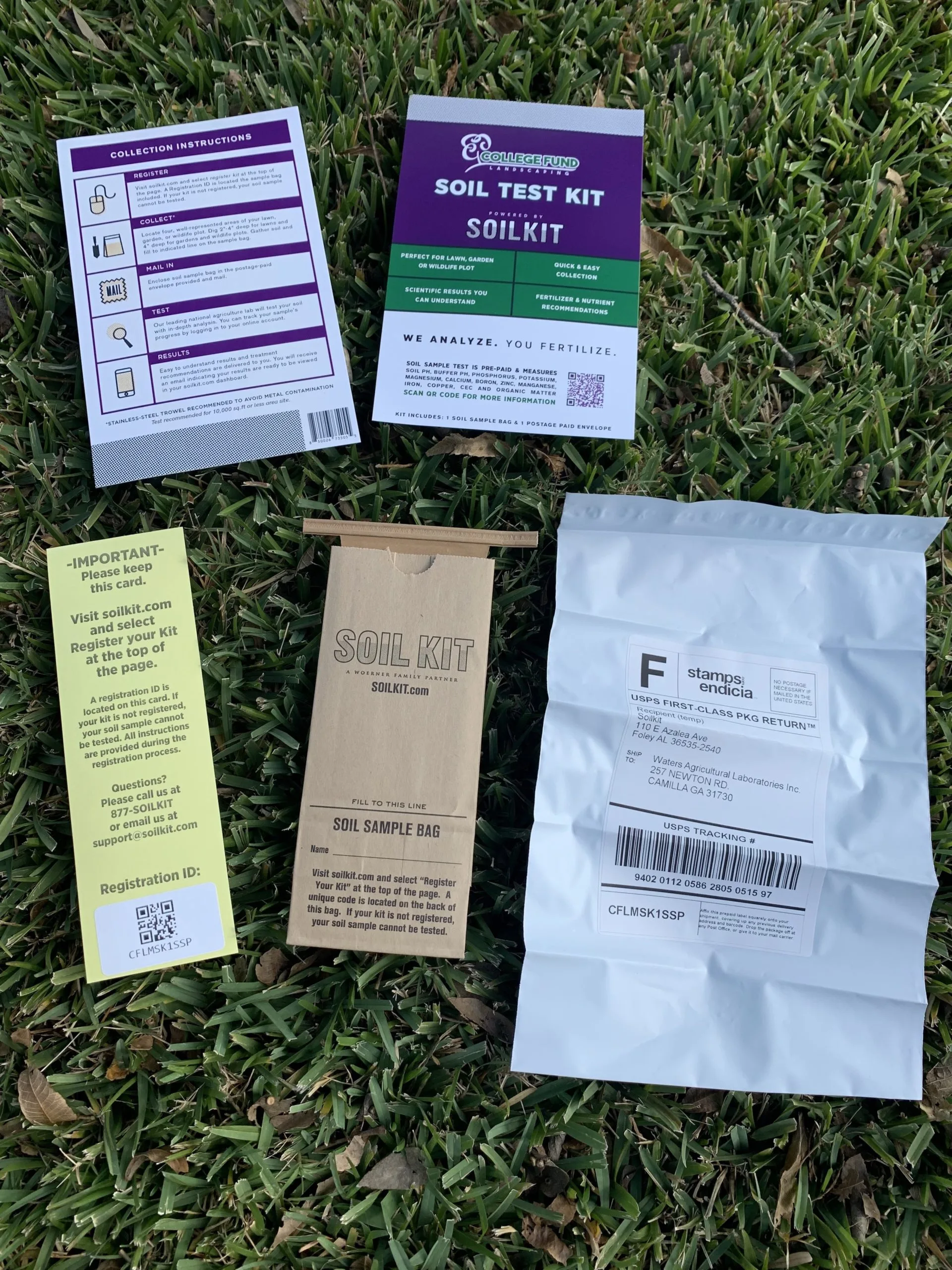In the old days, soil was soil. Dirt was dirt. You planted seeds on your lawn, watered ‘em, watched ‘em, and sometimes they grew and sometimes, well, there’s always next year. These days, thankfully, we’ve gotten more scientific. We can do a whole lot more than water the grass and hope for the best.
You know those ancestry tests people take, where they swab their cheeks and send the results away to labs so they can be analyzed? Then you have to listen to them for the next month as they go on and on about their great-great-grandparents who were Italian gelato kingpins? Well, nowadays, you can do the same thing for your lawn. Only without the gelato.
That’s right, there’s a company we love called SoilKit, that takes a sample of your soil and analyzes it to determine its properties. And that’s important because the elements that make up your soil can tell you a lot about the best way to care for your lawn. Think you know your dirt? You might, but SoilKit’s deep dive tests for pH, buffer pH, phosphorus(P), potassium (K), magnesium (Mg), calcium (Ca), boron (B), zinc (Zn), manganese (Mn), iron (Fe), organic matter, and all sorts of other things.

The kit tests for salt levels, electrical conductivity, and texture. Insights into soil makeup allow you as a homeowner to take action and give your soil the treatment it needs to stay healthy. Treatments and best growing practices differ for turf with high levels of zinc and high levels of calcium. The steps you take to reduce pH in an alkaline lawn can greatly improve its ability to grow turf. There are lots of ways to improve your soil health, but the first step to any of them is to get a proper checkup.
Perhaps more than anything else, the health of your soil affects the health of your turf. This is because your grass absorbs all its nutrients from the soil. Your soil is your turf’s diet, so you want to make sure it is balanced. We recommend testing your soil once a year to keep track of changes and measure the results of the treatments you’ve used in the past.
Landscaping may be an art (and we’d argue that it is!), but soil control is a science. Learning what your soil has (and needs) is the best way to ensure healthy turf.
How to Test Your Soil
Unless you’ve got a soil chemistry lab in your basement, the best way to test your soil is by using SoilKit. We’ve got two ways you can go about it.
The first way is, of course, the easy way. Call your friends at College Fund Landscaping and we’ll do the dirty work for you. We’ll come over and grab a plug of your soil and send it off to the lab for analysis. When the results come back, we’ll help you interpret the chemistry stuff and figure out the next steps for increasing your soil’s health.
Prefer to go it alone? No problem! Here’s how to do it.

First, clean a spade or trowel. Old dirt or dirt from another area of the house (the garden, for example) can contaminate your soil sample. Once your shovel is clean, you’re going to want to dig deep enough to get to the base of the rooting zone (that’s about a foot in your garden and eight inches for your lawn). Collect your sample in a clean container and mix it around, no need to worry about clumping. You’re going to want three to four cups of soil. If you’ve got different areas of soil you are thinking about testing (a garden, a lawn, a field), make sure to label the sample so you remember which is which. Then mail it off to your testing company!

If you decide to use SoilKit, they’ll send you everything you need to get testing.
What To Do Once You Get Your Soil Testing Results
So you sent in your testing kit and you’ve learned a lot about the chemical makeup of your soil. Now what?
Soil testing provides a clear picture, a starting point for improving your turf’s health. Soil tests will provide you with vital information like pH levels and levels of macronutrients and micronutrients. You can use this information to take steps to improve the health of your lawn, the same way a doctor might tell you to take certain supplements to lower your blood pressure. Here are some common problems soil testing can identify and how you can fix them.
High/Low pH
pH measures the acidity or alkalinity of your soil and measures range from 1 to 14. If your soil pH is 1, your soil is highly acidic, if it is 14, your soil is highly alkaline. A pH level of 7 is neutral.
pH levels are determined by geographical locations and other factors. Most plants prefer a pH level close to 7, so high or low pH can throw their growth out of whack. High pH prevents plants from absorbing iron from the soil, giving them a yellowish tinge between the veins. Many homeowners treat this problem with iron treatments, but lack of iron is not the problem. It is there in the soil, but your plants can’t absorb it. Sulfer is the key to reducing soil pH, and homeowners can apply treatments in the form of raw elemental sulfur, sulfuric acid, or aluminum sulfate.
Many plants prefer soil that is slightly acidic (lower pH). In many areas of the US, a soil pH of 6 to 6.5 is ideal. Much lower than that, plants start to develop problems. pH poisoning (as it is called) happens in soil with low pH and causes an influx of manganese. Plants need manganese to grow, but too much causes yellowing or browning of the leaves and eventually kills off your plants. One of the best and most common ways to increase the alkalinity of the soil is called ‘liming.’ Liming involves adding crushed limestone to the soil. Because limestone is a base (the opposite of an acid), it will quickly raise your soil’s pH.
Nutrients
Soil testing kits can help you identify which nutrients your plants need to increase or decrease in order to grow more healthy. Nutrients are vital to plants and each offers a different benefit. These include:
- Phosphorus – helps seeds germinate and helps strengthen plant roots
- Nitrogen – encourages the growth of leaves and stems
- Potassium – creates fruit and flowers
- Calcium – helps plants absorb other nutrients
- Magnesium – helps create healthy leaves
- Sulfur – creates amino acids
There are many other nutrients that plants need to keep in balance. These include boron, copper, iron, manganese, and others.

Professional Fertilization and Weed Control Programs Near Plano, Texas
Customized fertilization treatments can be used to target the areas of your soil that need improvement. College Fund Landscaping can help create a fertilization plan using a soil testing kit.
As part of our November fertilization package, we will focus on preparing your lawn and your soil for the colder months ahead. If you’re interested in learning more about this service or getting your soil tested, feel free to reach out. We’re happy to talk through the details with you and help you gain a better understanding of your lawn and your landscape.


Comments (0)
Thanks for your comment!
Thanks for your feedback! Your comments have been successfully submitted! Please note, all comments require admin approval prior to display.
Error submitting comment!
There is a problem with your comment, please see below and try again.